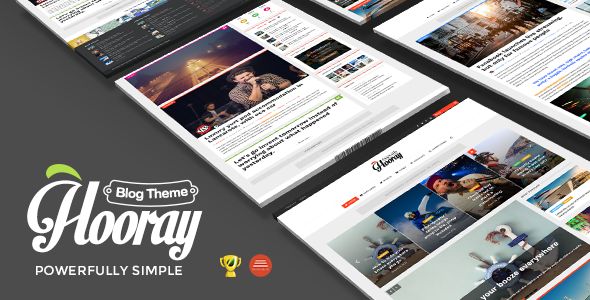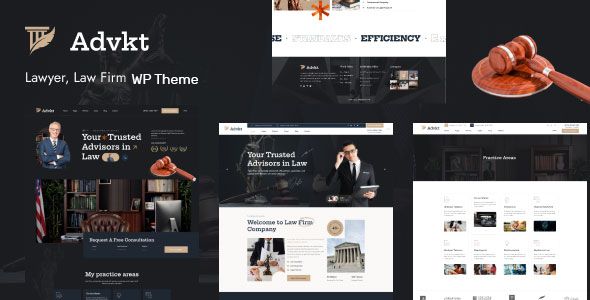Logico | Transportation & Logistics WordPress Theme

- Description
- Reviews
- FAQ

This release is license-free under the GPL framework, which means you can install Logico | Transportation & Logistics WordPress Theme on unlimited domains—production, staging, client previews, internal demos—without activation gates or per-site limits. You retain the professional experience and templates people expect, keep update parity with the official feature evolution, and pay once. For agencies, that translates to faster rollouts and consistent stacks; for in-house teams, it’s simple budgeting and fewer surprises.
✅ Product Description
Logico | Transportation & Logistics WordPress Theme is built for the real world of freight, trucking, 3PL, courier, and multimodal operations. It balances clean design with the kind of information architecture logistics buyers actually need: service matrices, lanes and coverage maps, fleet specs, warehouse capabilities, compliance badges, Incoterms explanations, and straight-to-the-point RFQ flows. The default pages guide prospects from “Can you serve my route and cargo type?” to “What’s the next step?” without burying them in fluff.
On the front end, the theme treats imagery and data as equals. Hero banners and route maps establish presence; below the fold, dense blocks—like equipment types, liftgate availability, reefer setpoints, pallet limits, or container specs—are laid out in scannable cards and tables. That’s intentional: procurement managers and shippers rarely read like consumers; they skim for proof of capability, compliance, and speed to quote. Logico | Transportation & Logistics WordPress Theme presents those signals clearly and keeps the path to contact or quote submission in view at all times.
The homepage is modular. You can prioritize verticals (Automotive, Pharma, FMCG), modes (Road, Air, Ocean, Rail), or solutions (FTL/LTL, last-mile, cross-dock, e-commerce fulfillment). Builders can drag sections to fit the narrative: a results-first hero (“On-time delivery. Zero excuses.”), a KPI strip (OTIF %, on-time pickup %, damage rate, average claim resolution), a coverage map, then proof (case studies, certifications, testimonials). A sticky CTA invites visitors to Get a Quote, Check Coverage, or Book a Pickup. The single-service layout goes deeper with lane examples, transit time bands, equipment lists (dry van, flatbed, step deck, reefer, box truck), accessorials (liftgate, residential, inside delivery), and a mini-FAQ that tackles common blockers.
Inside Logico | Transportation & Logistics WordPress Theme, content blocks are engineered for logistics semantics: tariff tables, volumetric weight formulas, HS codes and Incoterms glossaries, hazmat class callouts, temperature-controlled guidelines, and bonded warehouse specifics. Forms are practical: RFQ with NMFC/class fields, dimensions/weight, stackability, pickup/delivery constraints, and preferred time windows. For e-commerce 3PLs, there’s room for SLA tables, SKU throughput charts, and integrations copy (carts and marketplaces) written in a buyer-friendly tone.
Because this package is license-free under GPL, teams with multiple brands or regionals can roll out carbon-copy implementations with localized content and color systems. You’ll keep identical section behavior across sites, which simplifies training and maintenance. Designers don’t have to reinvent the wheel each time; they can share a design language and update it centrally, then replicate it across all carriers and sub-brands.
The writing surface is equally important. Logistics pages often blend marketing and technical writing—“human readable” but precise. The theme’s typography and spacing make dense content digestible: legible body copy, roomy line height, tactile buttons, and tables that don’t collapse into chaos on mobile. Cards summarize, accordions reveal detail, and persistent CTAs anchor the journey from research to RFQ.
In short, Logico | Transportation & Logistics WordPress Theme gives carriers and logistics providers a site that looks premium, reads professionally, and converts like an operations team would want—quietly, reliably, with fewer touchpoints between first click and booked load.
✅ Key Features
1) Service-first information architecture
Start with what shippers seek: modes, lanes, equipment, SLAs. The theme ships with modular sections for FTL/LTL, air freight, ocean (FCL/LCL), rail, intermodal, last-mile, cross-border, customs brokerage, and contract logistics. Each section accepts quick facts (transit bands, cutoff times, service regions) and deeper content (cargo handling guidelines, documentation lists).
2) Coverage maps and lane storytelling
Insert coverage grids, region cards, and interactive maps to show where you actually operate. Lane cards can include example routes, typical transit, and seasonality notes. This is often the turning point for buyers: if they see their city pairs covered, they reach out.
3) Fleet and equipment blocks
Add vehicle classes (sprinter, box truck, 53’ dry van, flatbed, step deck, lowboy, reefer), accessories (liftgate, tarps, chains, e-track), and constraints (door openings, weight limits). For ocean/air, include container types (20/40/40HC), ULD references, and dimension schemas.
4) 3PL & fulfillment layouts
Dedicated sections describe receiving windows, ASN/EDI expectations, storage types (ambient, chilled), inventory accuracy, cycle count policies, pick/pack speeds, and value-added services (kitting, labeling, returns). SLA cards turn ops metrics into compelling proof.
5) Compliance and certifications showcase
Place ISO 9001/14001, C-TPAT, TAPA, GDP, IATA, IMDG, and TSA Known Shipper badges right where due diligence happens. Attach short blurbs that translate the badge into buyer benefit (“GDP for pharma = monitored cold chain, calibrated equipment, deviation logs”).
6) Quote and booking flows that feel native
The default RFQ form supports dimensional fields, stack/tilt/risk flags, accessorials, and scheduling windows. Inputs are touch-friendly on mobile and condensed on desktop. Confirmation pages are set up to reinforce SLAs and next steps instead of going dead.
7) Case study and testimonial system
A simple, repeatable format: customer challenge, solution, result, and sustained metrics. Tie studies to specific services and lanes so they auto-surface on relevant pages.
8) Performance-aware templates
Tables and long lists can kill performance if handled poorly. The theme emphasizes lazy-loading, efficient assets, and table patterns that remain readable without punishing the DOM. With common optimization plugins, Core Web Vitals stay sane even with image-heavy galleries.
9) Blog & resource hub for search demand
Create plain-spoken guides on Incoterms, volumetric weight, hazmat classes, customs documents, or peak season planning. The blog templates pull related services into the sidebar or footer, turning education into pipeline.
10) Multisite & multi-brand ready
One design system across many brands and regions is a real advantage. Clone, localize, and launch. Global updates propagate consistently, and your support team only has to learn one pattern library.
Who it’s for
-
National and regional carriers needing clear FTL/LTL and last-mile pages with lane credibility.
-
3PLs and contract logistics providers who want to articulate warehousing, fulfillment, and value-added services in a buyer-centric way.
-
Freight forwarders and NVOCCs who must explain complex international processes without putting readers to sleep.
-
Courier and same-day services focused on speed, availability, and dependable SLAs.
-
Specialized movers (heavy haul, project cargo, temperature-controlled) who rely on trust signals and technical detail to win work.
Real-world usage patterns
-
Regional LTL carrier: The homepage centers on a coverage map and guaranteed service tiers. Lane cards lead to an RFQ with class, dims, and accessorials. A service update strip handles weather or embargo notices.
-
Pharma cold-chain forwarder: GDP compliance badges, temperature curves, and validated packaging protocols feature prominently. Case studies show excursion-free shipments with monitored handoffs.
-
E-commerce 3PL: Fulfillment SLAs, cut-off times, and integration overviews sit above customer logos and testimonial cards. A calculator block helps estimate storage and pick/pack fees (inputs only; outputs are guidance).
-
Project cargo & heavy haul: Equipment galleries, route surveys, permit experience, escort requirements, and crane coordination details drive confidence. The CTA is Request a Move Plan rather than a generic quote.
Design language & UX notes
-
Sober, industrial elegance: solid type scale, functional icons, high-contrast buttons.
-
Data first, then flourish: tables and specs are treated as core content, not afterthoughts.
-
Persistent CTAs: “Get a Quote,” “Check Coverage,” and “Book a Pickup” remain accessible on scroll.
-
Mobile pragmatism: multi-step forms are broken into bite-size steps with clear progress indicators.
-
Trust micro-patterns: small compliance callouts near forms reduce friction at the exact decision point.
Setup & Customization
-
Install and activate the theme normally.
-
Optional demo import to bootstrap layouts for modes, services, and resources.
-
Brand settings: colors, typography, header/footer presets, button radius, and form styles.
-
Service taxonomy: define modes, verticals, and regions to organize pages and auto-surface related content.
-
Fleet & equipment library: populate vehicle classes, container types, and handling accessories once; reuse across service pages.
-
RFQ forms: enable fields for dims/weight, stackability, accessorials, hazardous class, and time windows.
-
Coverage: add maps or grid cards for states, provinces, corridors, and cross-border notes.
-
Performance: enable caching, image compression, and lazy-loading; verify Largest Contentful Paint on hero pages.
-
Review mobile: test forms, accordions, and tables on smaller screens; adjust microcopy for clarity.
Because you’re not fighting activation or per-domain licensing, it’s straightforward to propagate this configuration across every site in your network—dev → staging → production—without friction or extra cost.
Content strategy for logistics buyers
-
Lane proof: include three example lanes per service with origin/destination, typical transit, and seasonal caveats.
-
SLA clarity: publish response times for quotes, pickup windows, and delivery commitments (where applicable).
-
Compliance decoding: explain badges in human language, not alphabet soup.
-
Pricing transparency (to a point): outline what drives cost—distance, dims, class, accessorials, seasonality.
-
Operational photos: equipment, dock doors, inside trailers, packaging stations; show your reality, not just stock imagery.
-
Updates & advisories: use the blog/news area for embargoes, peak surcharges, weather impacts, and cross-border changes.
Performance & Compatibility
Logico | Transportation & Logistics WordPress Theme is engineered for mainstream WordPress stacks (modern PHP, common hosts) and plays well with popular caching and optimization plugins. Tables are responsive; accordions keep dense content manageable; images lazy-load by default. With careful asset control, you can hit strong Core Web Vitals even on spec-heavy pages. The theme supports translation workflows so regional sites can localize routes, compliance notes, and documentation guidance.
Security-minded teams will appreciate clean markup and the ability to keep plugins minimal. Because updates track official feature evolution, you benefit from incremental template refinements without maintaining a fork.
Why this GPL-licensed release helps teams ship faster
-
Unlimited domains: one package, many brands and regions.
-
One-time cost: easy on budgets; removes renewal risk.
-
Full feature parity: keep the pro experience visitors expect.
-
Rapid staging: clone a proven configuration and launch quickly.
-
Consistent training: one design system reduces onboarding time for new editors.
Maintenance & Growth ideas
-
Quarterly page audits: refresh KPIs, case studies, and route highlights.
-
Form analytics: instrument RFQ forms to find drop-off fields; simplify where possible.
-
Search-led editorial: prioritize guides on Incoterms, customs docs, and volumetric weight; these topics drive steady, qualified traffic.
-
Seasonal playbooks: publish peak-season policy pages early; set expectations around cutoffs and surcharges.
-
Evidence updates: rotate testimonials and logos; stale proof harms credibility.
Frequently Asked Questions (FAQ)
Q1: What exactly do I receive with this license-free package?
You receive Logico | Transportation & Logistics WordPress Theme with professional templates, service blocks, forms, and options—usable on unlimited sites with no activation codes.
Q2: Can I install it across multiple brands and regions?
Yes. The unlimited usage model under the GPL framework is ideal for multi-brand and multisite deployments.
Q3: Will I be missing features compared to the original experience?
No. The goal is feature parity. You maintain alignment with the official feature evolution so templates and refinements continue to improve.
Q4: Does the demo import require activation?
No. You can import demo content to jump-start your build without entering any license keys.
Q5: Can the RFQ form capture freight-specific details like dimensions, class, and accessorials?
Yes. The default fields support dims/weight, stackability, hazardous flags, accessorial needs (liftgate, residential, inside), and time windows.
Q6: How do I show lanes and coverage convincingly?
Use region cards and maps to illustrate coverage, and add lane cards with example O/D pairs and transit bands. Tie case studies to those lanes for proof.
Q7: Is the theme suitable for cold-chain or hazmat operations?
It includes blocks for compliance badges and SOP notes. You can add temperature profiles, excursion handling, hazmat classes, and audit language where needed.
Q8: What about e-commerce fulfillment and 3PL?
There are layouts for receiving, storage types, pick/pack SLAs, and value-added services. Throughput metrics and accuracy KPIs fit neatly into cards and tables.
Q9: Will heavy tables and long specs hurt performance?
The templates are performance-aware. Combine them with your optimization stack—caching, compression, lazy-loading—and you can keep Core Web Vitals in shape.
Q10: Can I localize content for different languages or markets?
Yes. Use standard WordPress translation workflows to localize strings, service pages, and resource articles.
Q11: Are there limits on staging or test environments?
No. Spin up as many as you need. The unlimited sites model is especially useful for agencies and complex internal review processes.
Q12: How are updates handled?
You keep in step with official improvements. Test on staging, then roll to production when ready—no relicensing or domain keys required.
Q13: Can I restructure the homepage without code?
Yes. Sections (coverage, fleet, services, case studies, KPIs) are modular. Drag to reorder, duplicate, or remove as needed.
Q14: Does it support publishing service advisories and peak-season notices?
Absolutely. Use the blog/news layout for advisories and pin a slim alert bar on critical pages during peak or weather events.
Final note
If your business runs on credibility, coverage, and clean handoffs between sales and operations, Logico | Transportation & Logistics WordPress Theme gives you the right kind of website: technical enough to satisfy serious shippers, elegant enough to represent your brand, and fast enough to convert. Pair that with unlimited site usage, one-time cost, and update parity, and you get a stack that respects how logistics teams actually work—focused, repeatable, and ready to move freight without licensing friction.
Q: Do I need a license key?
A: No. All products are Pre-Activated. You can use 100% of the Premium features immediately.
Q: Can I use the One-Click Demo Import?
A: Yes, absolutely! We ensure the demo import feature works perfectly.
Q: Can I use the products on multiple websites?
A: Absolutely. The GPL license allows use on unlimited domains.
Q: Are the files safe?
A: Yes. All files are scanned by McAfee and VirusTotal before uploading.
Share Now!


















